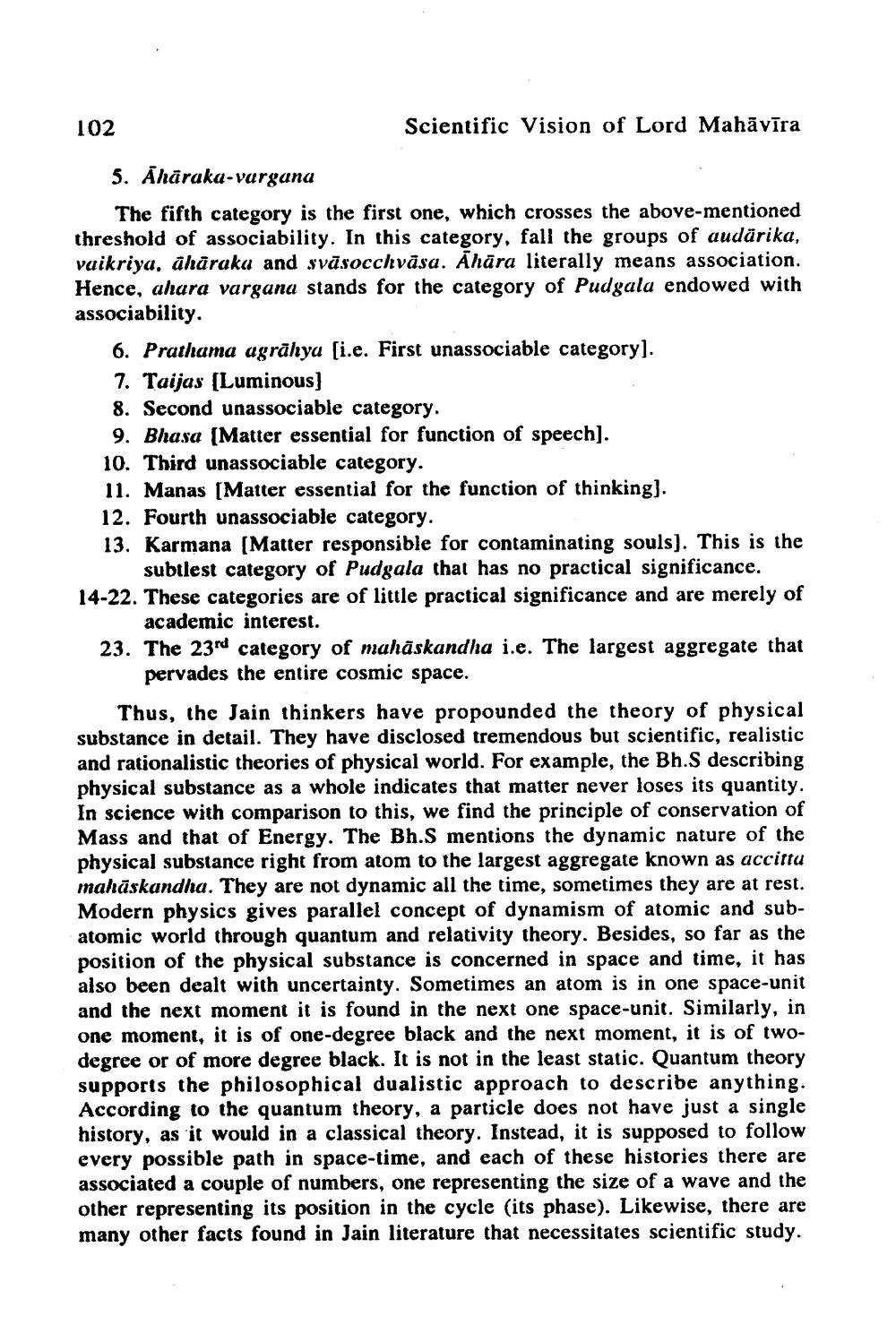________________
102
Scientific Vision of Lord Mahāvīra
5. Ahāraka-vargana
The fifth category is the first one, which crosses the above-mentioned threshold of associability. In this category, fall the groups of audärika, vaikriya, ähāraka and svāsocchvāsa. Ahāra literally means association. Hence, ahara vargana stands for the category of Pudgala endowed with associability.
6. Prathama agrāhya [i.e. First unassociable category). 7. Taijas (Luminous) 8. Second unassociable category. 9. Bhasa (Matter essential for function of speech). 10. Third unassociable category. 11. Manas (Matter essential for the function of thinking}. 12. Fourth unassociable category. 13. Karmana (Matter responsible for contaminating souls). This is the
subtlest category of Pudgala that has no practical significance. 14-22. These categories are of little practical significance and are merely of
academic interest. 23. The 23rd category of mahāskandha i.e. The largest aggregate that
pervades the entire cosmic space.
Thus, the Jain thinkers have propounded the theory of physical substance in detail. They have disclosed tremendous but scientific, realistic and rationalistic theories of physical world. For example, the Bh.S describing physical substance as a whole indicates that matter never loses its quantity. In science with comparison to this, we find the principle of conservation of Mass and that of Energy. The Bh.S mentions the dynamic nature of the physical substance right from atom to the largest aggregate known as accittu mahāskandha. They are not dynamic all the time, sometimes they are at rest. Modern physics gives parallel concept of dynamism of atomic and subatomic world through quantum and relativity theory. Besides, so far as the position of the physical substance is concerned in space and time, it has also been dealt with uncertainty. Sometimes an atom is in one space-unit and the next moment it is found in the next one space-unit. Similarly, in one moment, it is of one-degree black and the next moment, it is of twodegree or of more degree black. It is not in the least static. Quantum theory supports the philosophical dualistic approach to describe anything. According to the quantum theory, a particle does not have just a single history, as it would in a classical theory. Instead, it is supposed to follow every possible path in space-time, and each of these histories there are associated a couple of numbers, one representing the size of a wave and the other representing its position in the cycle (its phase). Likewise, there are many other facts found in Jain literature that necessitates scientific study.




